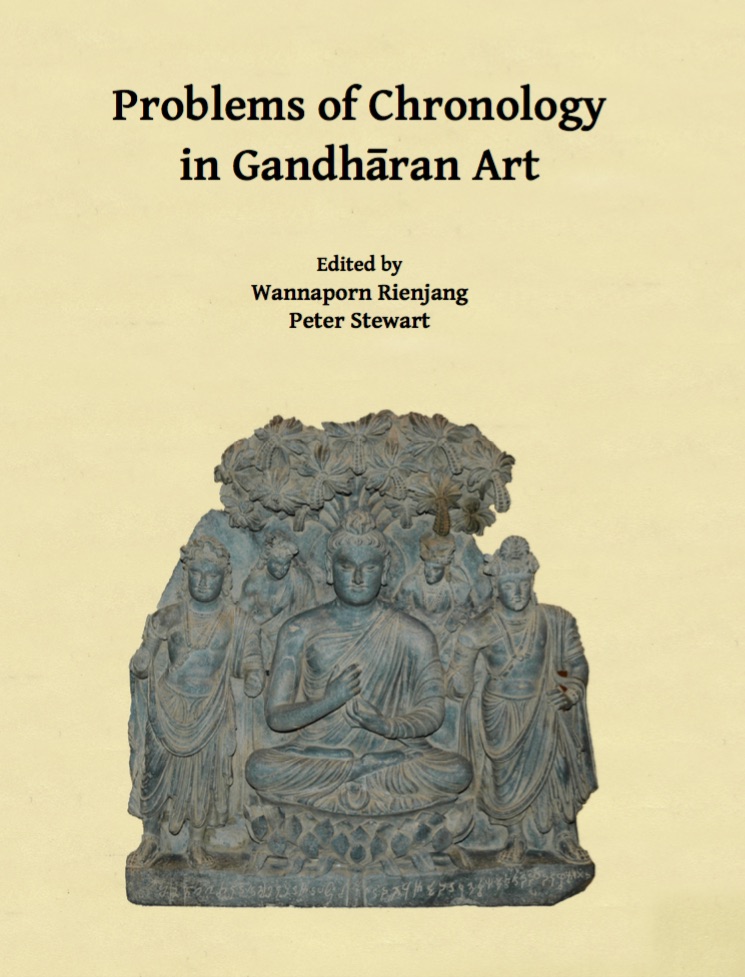Publications

Problems of Chronology in Gandharan Art
Proceedings of the First International Workshop of the Gandhāra Connections Project, University of Oxford, 23rd-24th March, 2017
edited by Wannaporn Rienjang and Peter Stewart
This is the first publication of the Gandhāra Connections project at the University of Oxford’s Classical Art Research Centre, which has been supported by the Bagri Foundation and the Neil Kreitman Foundation. It presents the proceedings of the first of three international workshops on fundamental questions in the study of Gandhāran art, held at Oxford in March 2017.
Published January 2018
ISBN 978 1 78491 855 2
ISBN 978 1 78491 856 (e-Pdf)
DOI: 10.32028/9781784918552
This is the Classical Art Research Centre's first free, online ebook, issued under a Creative Commons Attribution-NonCommercial-NoDerivatives 4.0 International Licence. It is also available to buy in print from Archaeopress, priced £32.00.
- Download the free eBook version published in Archaeopress Open Access 2016 here. For more information regarding publishing in Open Access with Archaeopress please visit their website.
- Download the whole book from the Gandhara Connections website (55MB)
- View/download on Google Books/Google Play
- View/download on academia.edu
- View/download at the Internet Archive
- Links to download individual chapters of the book are further down this page.
Since the beginning of Gandhāran studies in the nineteenth century, chronology has been one of the most significant challenges to the understanding of Gandhāran art. Many other ancient societies, including those of Greece and Rome, have left a wealth of textual sources which have put their fundamental chronological frameworks beyond doubt. In the absence of such sources on a similar scale, even the historical eras cited on inscribed Gandhāran works of art have been hard to place. Few sculptures have such inscriptions and the majority lack any record of find-spot or even general provenance. Those known to have been found at particular sites were sometimes moved and reused in antiquity. Consequently, the provisional dates assigned to extant Gandhāran sculptures have sometimes differed by centuries, while the narrative of artistic development remains doubtful and inconsistent.
Building upon the most recent, cross-disciplinary research, debate and excavation, this volume reinforces a new consensus about the chronology of Gandhāra, bringing the history of Gandhāran art into sharper focus than ever. By considering this tradition in its wider context, alongside contemporary Indian art and subsequent developments in Central Asia, the authors also open up fresh questions and problems which a new phase of research will need to address.
Problems of Chronology in Gandhāran Art is the first publication of the Gandhāra Connections project at the University of Oxford’s Classical Art Research Centre, which has been supported by the Bagri Foundation and the Neil Kreitman Foundation. It presents the proceedings of the first of three international workshops on fundamental questions in the study of Gandhāran art, held at Oxford in March 2017.
Chapter downloads
Introduction
Wannaporn Rienjang and Peter Stewart (DOI: 10.32028/9781784918552P1-6)
Numismatic evidence and the date of Kaniṣka I
Joe Cribb (DOI: 10.32-28/9781784918552P7-34)
Positioning Gandhāran Buddhas in chronology: signifcant coordinates and anomalies
Juhyung Rhi (DOI: 10.32028/9781784918552P35-52)
A framework for Gandhāran chronology based on relic inscriptions
Stefan Baums (DOI: 10.32028/9781784918552P53-70)
On Gandhāran sculptural production from Swat: recent archaeological and chronological data
Luca Maria Olivieri and Anna Filigenzi (DOI: 10.32028/9781784918552P71-92)
The chronology of stūpa relic practice in Afghanistan and Dharmarājikā, Pakistan, and its implication for the rise in popularity of image cult
Wannaporn Rienjang (DOI: 10.32028/9781784918552P93-102)
Buddhist art’s late bloomer: the genius and influence of Gandhāra
Monika Zin (DOI: 10.32028/9781784918552P103-122)
On the relationship between Gandhāran toilet-trays and the early Buddhist art of northern India
Ciro Lo Muzio (DOI: 10.32028/9781784918552P123-134)
Is it appropriate to ask a celestial lady’s age?
Robert Bracey (DOI: 10.32028/9781784918552P135-148)
Architectural evidence for the Gandhāran tradition after the third century
Kurt Behrendt (DOI: 10.32028/9781784918552P149-164)



